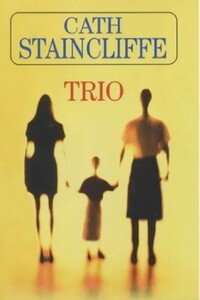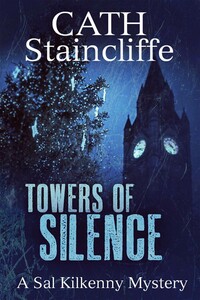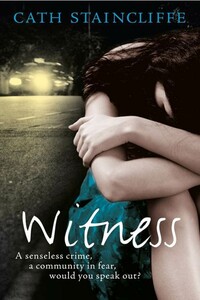A powerful sense of shock was palpable in the atmosphere; Janine could almost taste it, acidic like metal, harsh and electric, galvanising them all.
Janine pressed 999, speaking as soon as the operator answered. Ambulance. Little girl’s been knocked down. Outside Oak Lane Primary, Didsbury.’
One of the women wore a nurse’s uniform, most likely working at one of the nearby hospitals, St Mary’s or Manchester Royal Infirmary; she began checking the girl. ‘It’s all right, love. Try and make you comfy, eh? Can you hear me Ann-Marie?’
Janine heard an engine rev, watched stunned as the Mercedes set off again at speed. She pulled out after it, sounding her horn and mounting the pavement to pass the onlookers.
Her mind had the bright clarity that comes with stress; she concentrated on the number plate, V384 ZNB, memorising it before the car turned out of her view. Using the police radio she got through immediately: ‘Attention all units, Detective Chief Inspector Lewis reporting RTA Oak Lane Primary, Didsbury. Driver failed to stop. Pedestrian injured. Blue Mercedes, registration Victor 384, Zulu, November, Bravo. Heading west on School Lane.’
She spotted the Mercedes again, turning right into Wilmslow Road. She activated the emergency sirens and flashers on her own vehicle and increased her speed. The traffic was still heavy; cars and vans and several buses chugging towards the city centre. They responded to the siren, pulling in so she could overtake. At the next junction she followed the Mercedes as it took a sharp right turn and roared away. She kept up with it along Fog Lane, fighting to keep control on the bends and where the road narrowed. The suburban street was a blur of privet hedges, red brick walls and stone gateposts that fronted the family houses. Despite her best efforts she couldn’t get a clear view of the car’s occupants; the windows were tinted glass.
Traffic lights ahead remained on green as the Mercedes took another right. Round in circles, she thought. She increased her speed again and edged closer. ‘Vehicle now on Parrswood Road heading south from Fog Lane.’ They rode through the Parrswood council estate with its distinctive cream rendered houses, built in rows of four.
In dismay she watched as the car approached the School Lane lights. It didn’t slow even though they were on red. Janine kept close. The Mercedes crossed the junction directly into the path of an oncoming van. The getaway car swerved violently and Janine, on its tail, screamed and rammed her foot on the brake, feeling the slam of the seatbelt as the car bucked and stopped inches from the shocked van driver. The Mercedes disappeared over the hill ahead. Frustrated, Janine hit the steering wheel. Damn, damn, damn.
Her radio crackled with news. ‘Victor 384, Zulu, November, Bravo. Mercedes reported stolen 22 hundred hours Monday 17 November.’ Stolen the previous evening. She groaned. The culprits would be even harder to find.
Returning to the school, she found the ambulance just leaving; the little girl was alive but unconscious. She rang Richard and filled him in. The group of witnesses remained; one woman was crying, wiping at her eyes repeatedly, automatically rocking the tall coach-built pram she’d been pushing. Others were talking about the accident, their voices hushed but edging now and again into hysteria. When traffic officers arrived shortly afterwards Janine spoke to the man in charge, giving a résumé of what had happened. Finally she got back in her car and set off for Northenden, feeling shaky and hollow and cold.
The car park at the side of the weir, next to the camping suppliers, was already awash with police vehicles. As Janine parked she saw the first news crew arrive, piling out of their van with cameras, flight cases and cables.
A scenic spot. It would make for good visuals – unlike the rows of terraced houses, dull semi-detached frontages or bleak alleyways that were usually the staple setting for local murder stories.
The river, olive brown and swiftly flowing, curved between steep grassy banks. The sweep of the motorway flyover above cast part of it in shadow, making the water there almost black. On the far bank were concrete buttresses that were part of the water management for the area. The land was low here and the Mersey often flooded, submerging the nearby golf course and playing fields along the valley.




![Не убий: Сборник рассказов [Собрание рассказов. Том II]](/uploads/books/images/84/845806b8d5eca54ef04de0af2428ce8462cec44d.jpg)


